When they drank it all, their hair became grass, their fingers became waves, their eyes became mirrors of the sun, and their sweat became the saliva of the river – Marie Tučková with Iga Świeściak
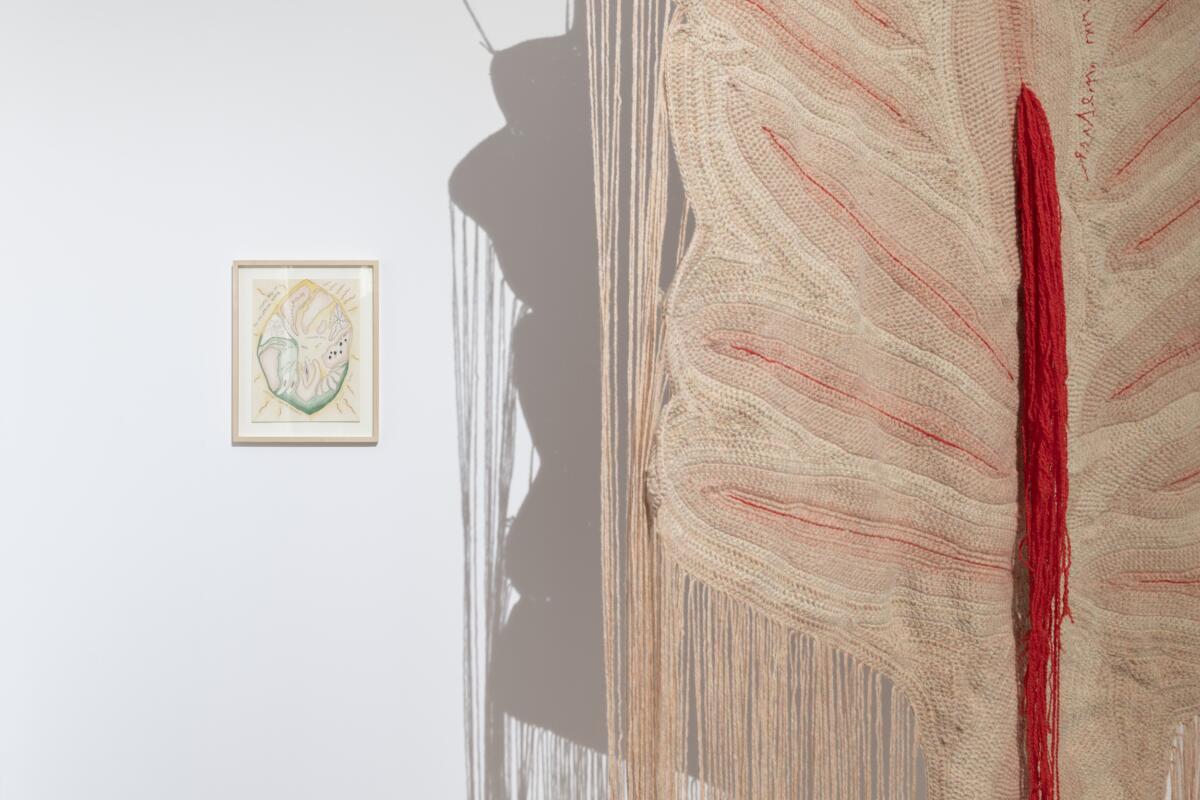
“When they drank it all, their hair became grass, their fingers became waves, their eyes became mirrors of the sun, and their sweat became the saliva of the river.”[1] is the first presentation in Poland of works by Czech artist Marie Tučková. The exhibition features a video and site-specific installation prepared in collaboration with Iga Świeściak, drawings, large-format fabrics made with crochet, and a sound installation composed of the artist’s polyphonic compositions.
The Polyphonic Womb
The centre of the exhibition is a room separated by a canvas. A kind of blanket house, a cosy hiding place where secrets can be shared and unbelievable stories told. In this case, it is the site for a video The Polyphonic Womb made by Iga Świeściak and Marie Tučková, who met during their studies at the Dutch Art Institute. The work is a combination of Świeściak’s video performance – a recording of their dance-movement improvisation – and a song composed and sung by Tučková. The movement performed by Świeściak is chaotic and unpredictable, alternating soft swinging with dynamic body shaking, odd gymnastics and once provocative, once melancholic facial expressions. In the course of improvisation, Świeściak follows the errors and explores moments of disruption, finding in them the potential to transgress normative states and identities, which is a core of their performative practice. The rasping and dynamic movement is matched with a harmonious polyphonic song performed by Tučková with cello accompaniment.[2] The poetic text of the piece, full of sound and nature metaphors, evokes a surreal story of mother and child, in which the return to the womb of the parent is accomplished by eating the child. Here, the gesture of care and closeness can be both an act of violence and a means of dispossession.
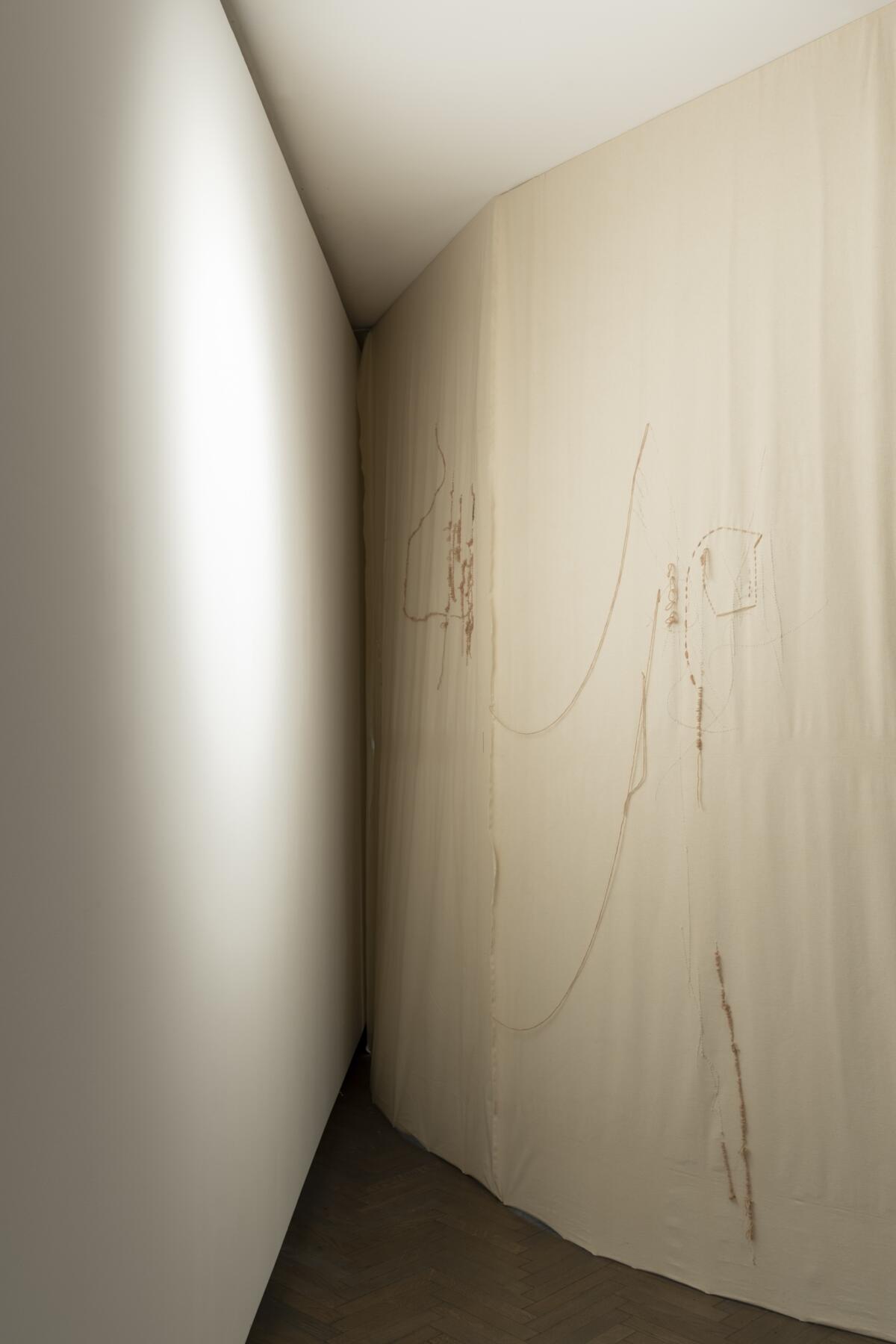

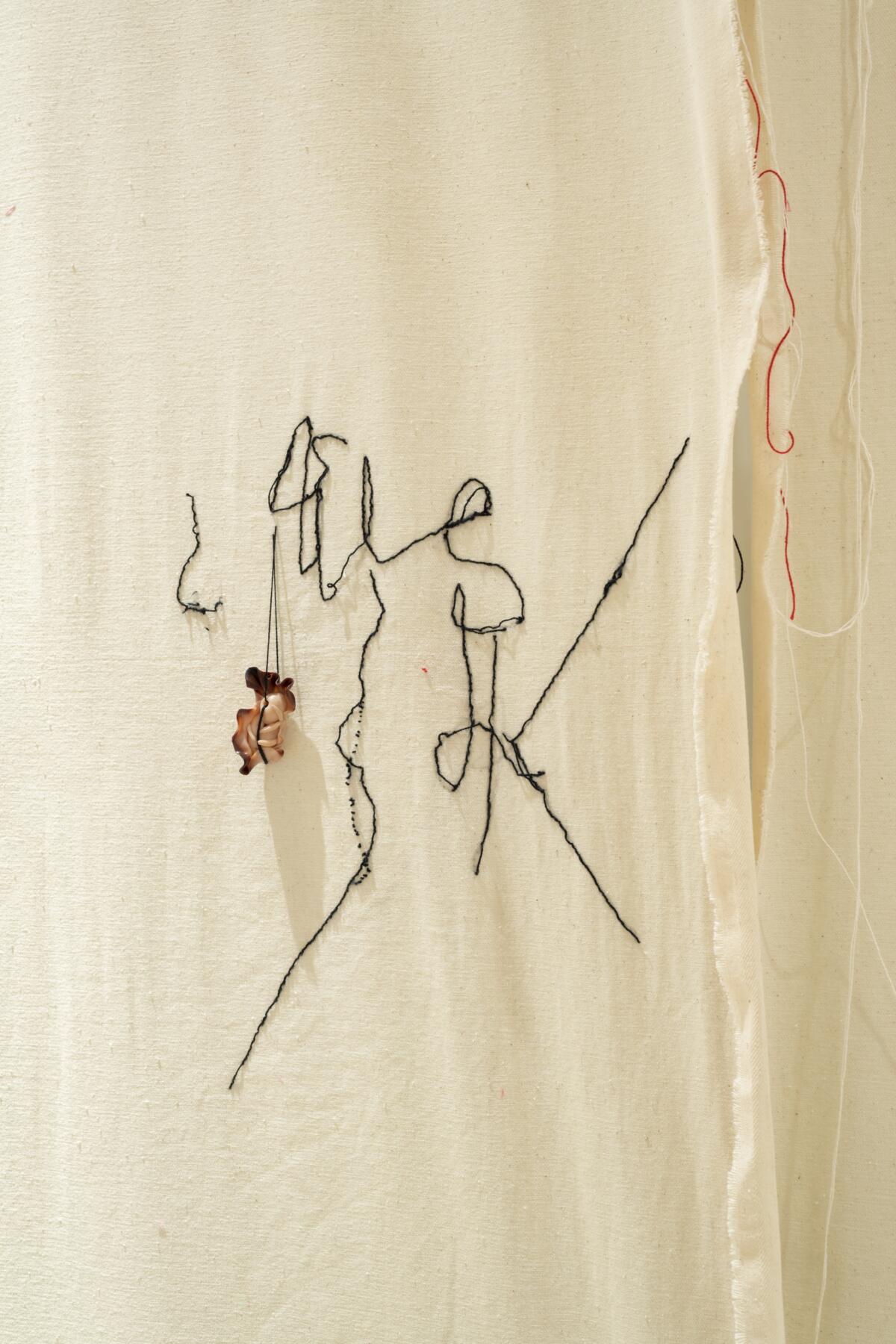
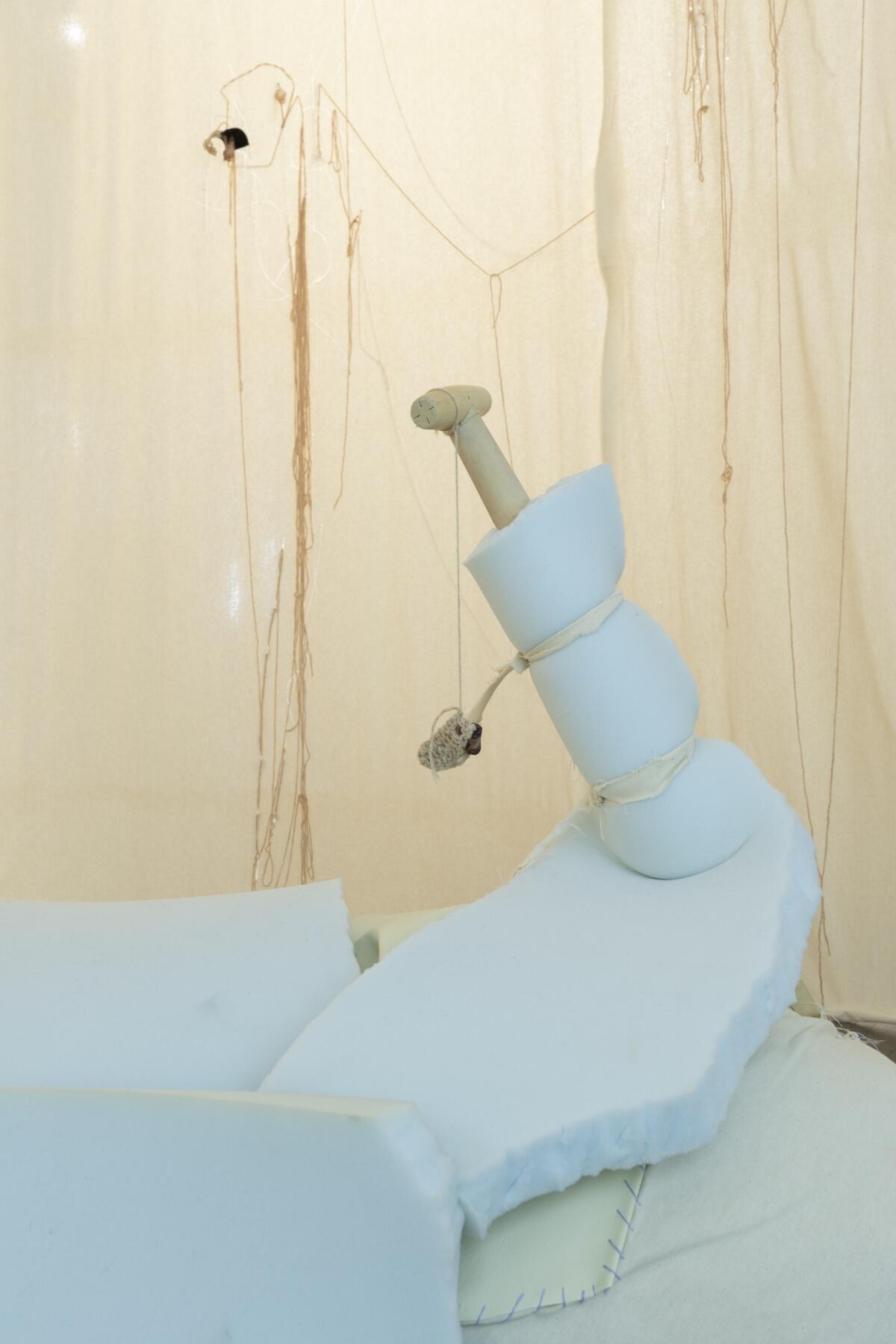

Similarly, the “womb” in Świeściak’s and Tučková’s installation is both a safe shelter and a type of cage. The fabric marking its space, the membrane separating it from the outside world, is marked by Tučková’s and Świeściak’s embroidered interventions – numerous rips, hanging and trailing threads and clearances that can be associated with scars. This site-specific installation is the result of improvisation, exchange and collaboration between the artists, where the thread motif refers both to the content of the video itself and – in the universal context of connection, (lack of) dialogue, processes of repair and destruction – to reconnecting with the “inner child”.


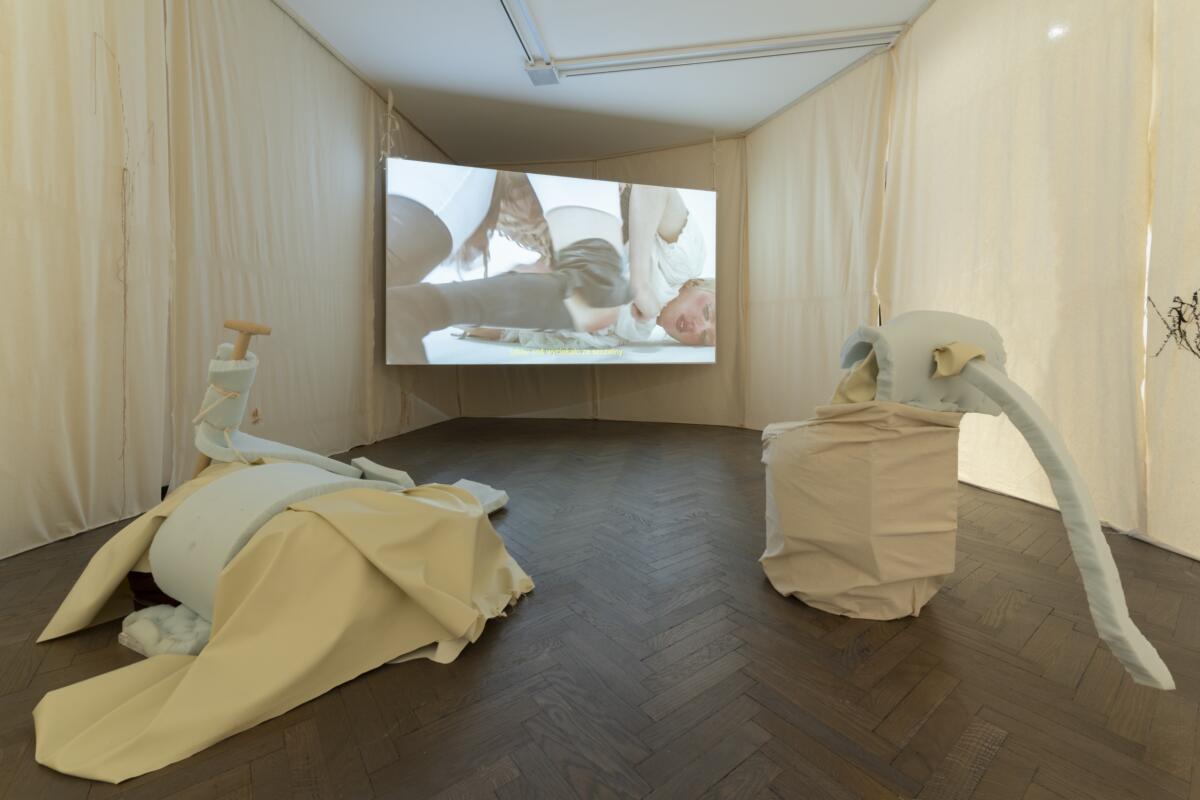

Leaking Sounds of the Angel’s Hole
The next room displays crochet fabrics from the Leaking Sounds of the Angel’s Hole series, which premiered in 2020 at the PLATO gallery in Ostrava during an exhibition of the winners of the J. Chalupecky Prize – the most important award for young artists in the Czech Republic. The monumental textiles, inspired by the trilogy by Octavia E. Butler’s Xenogenesis, resemble tree-vaginas in form. They combine anthropomorphism with a verbal message – embroidered texts addressing the interconnectedness of species and the flow of energy in the universe. In this series, Tučková draws attention to the connection between the exploitation of nature and women’s bodies. Both, the laborious process of crocheting as well as watching the delightfully handcrafted textiles evoke a meditative mood, helping to rethink our relationship with nature and look at more-than-human entities as sources of deep knowledge. What would trees say if their languages were known to us? What song would a river sing if they were a chorus?
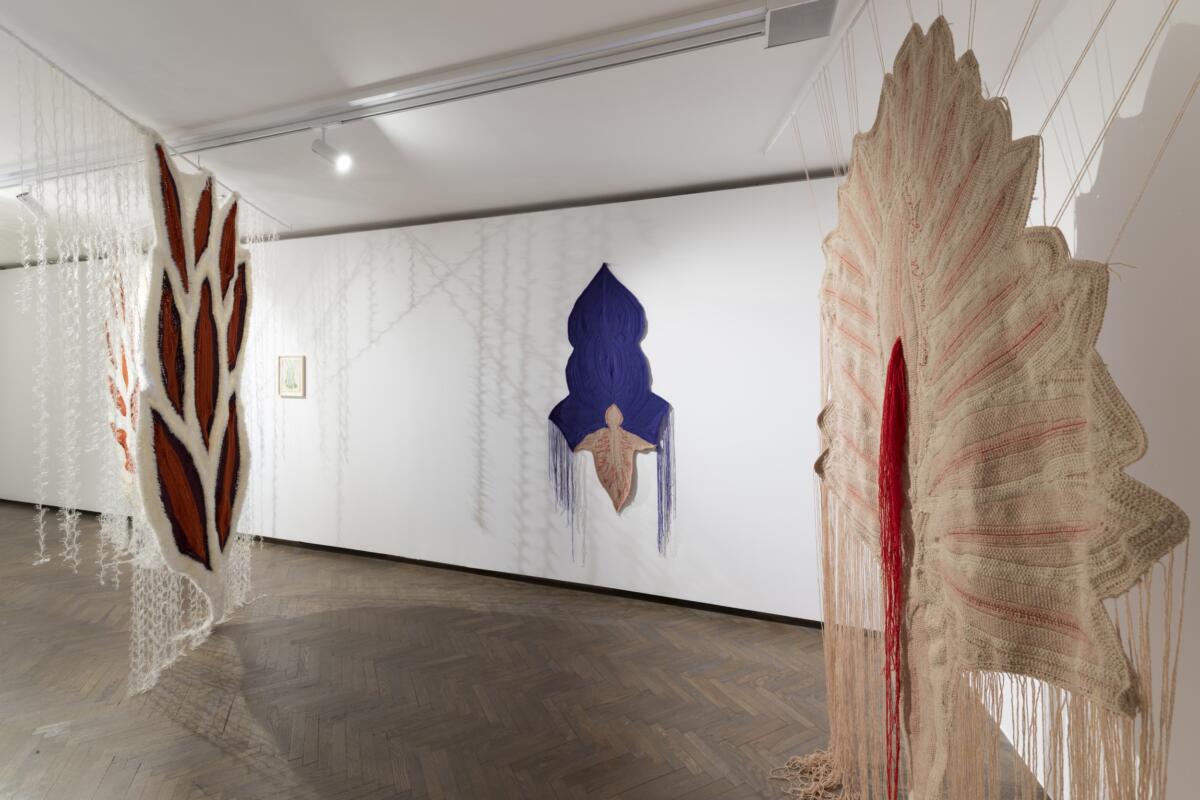
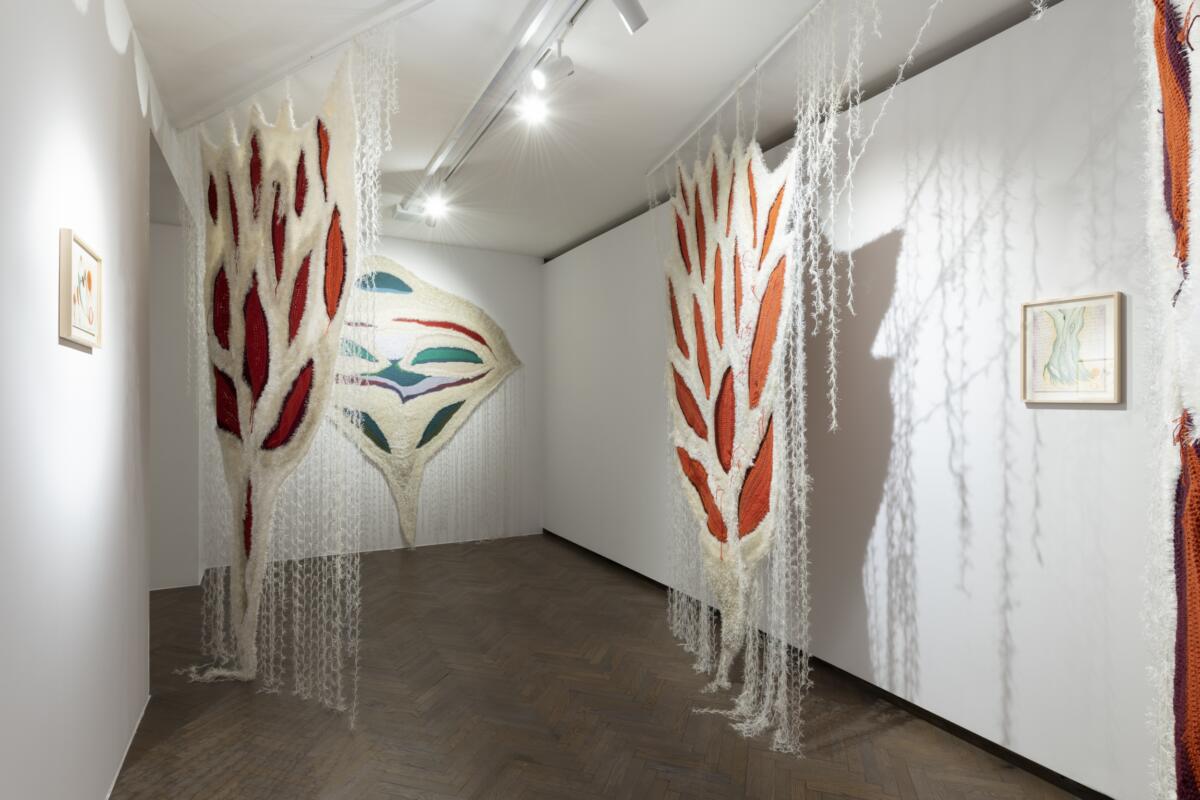


Wet Scores for Listening
The meditative or even sacred character of Tučková’s practice is fully captured in the last room, where a five-channel sound installation titled Wet Scores for Listening is presented. The room is filled with sound so dense that it becomes almost a tangible matter. It consists of polyphonic compositions by the artist: Rebirth, Singing Vaginas[3], Wet Scores[4] and Olše (Alders), which are the result of experimental listening sessions, vocal exercises, field recordings, collaborations with other musicians and singers, and improvised compositions inspired by visits to the Rokytká and Vltava rivers. Tučková is interested in polyphonic singing and practices this form of singing through co-founding choirs and ensembles. However, she treats it not as a way of cultivating traditional ways of singing, but of creating new compositions and telling contemporary stories. Polyphonic harmony, as in the case of religious choirs, creates a specific atmosphere that takes us to another dimension, opening up the possibility for deeper experience and reflection. It is also a way to spin alternative scenarios and invoke parallel worlds, which is the core of Tučková’s artistic strategy.
Marie Tučková (1994, Prague, Czech Republic) uses text, performance, sound, video, drawing and installation as artistic media. Her practice focuses on the politics of listening, polyphony of voices, various forms of collaboration and poetry. She received her bachelor’s degree from the Academy of Art, Architecture and Design in Prague. In 2021, she completed her master’s degree at the Dutch Art Institute in Arnhem. She has presented her works and performances at the Centre Pompidou in Paris, the Matter of Art Biennale in Prague, the PLATO gallery in Ostrava, and the Academiae – Youth Art Biennale in Bolzano, among others. She is the winner of the 2020 Jindřich Chalupecky Award, and co-founded the musical duo Cloudy Babies with Eva Rybářová. She lives and works in Prague.
Iga Świeściak (1993, Poland) creates performances, objects and installations that are anti-linear, iconoclastic collages composed of meticulously layered errors and confusing erotics. Their practice, with varying degrees of non/directness, invariably stems from the movement of the body. Projecting disruptions in the mechanisms of representation and the production of authenticity, Świeściak often uses new media while foregrounding the sex appeal of digital gadgets. Their works are built from modules that demand constant rearrangement. Through spatial sketches, tests and prototypes, they exchange components among themselves, revealing their own incompleteness. Świeściak is a graduated of the Academy of Art in Szczecin and the Dutch Art Institute in Arnhem. Their works and performances have been shown at the National Museum in Szczecin, Centre wallon d’art contemporain in Liege, Světova 1 gallery in Prague, among others. They lives in Berlin.
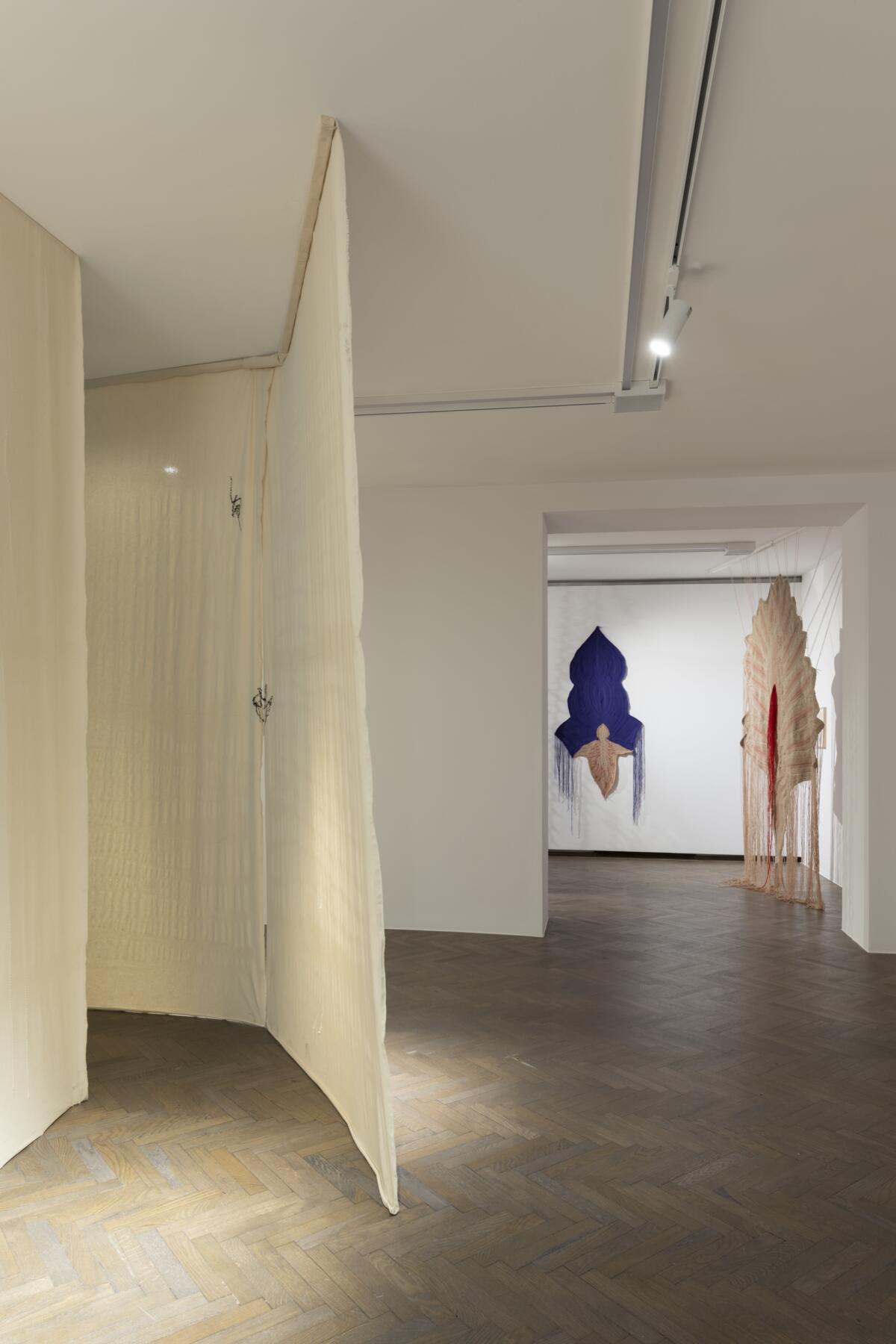
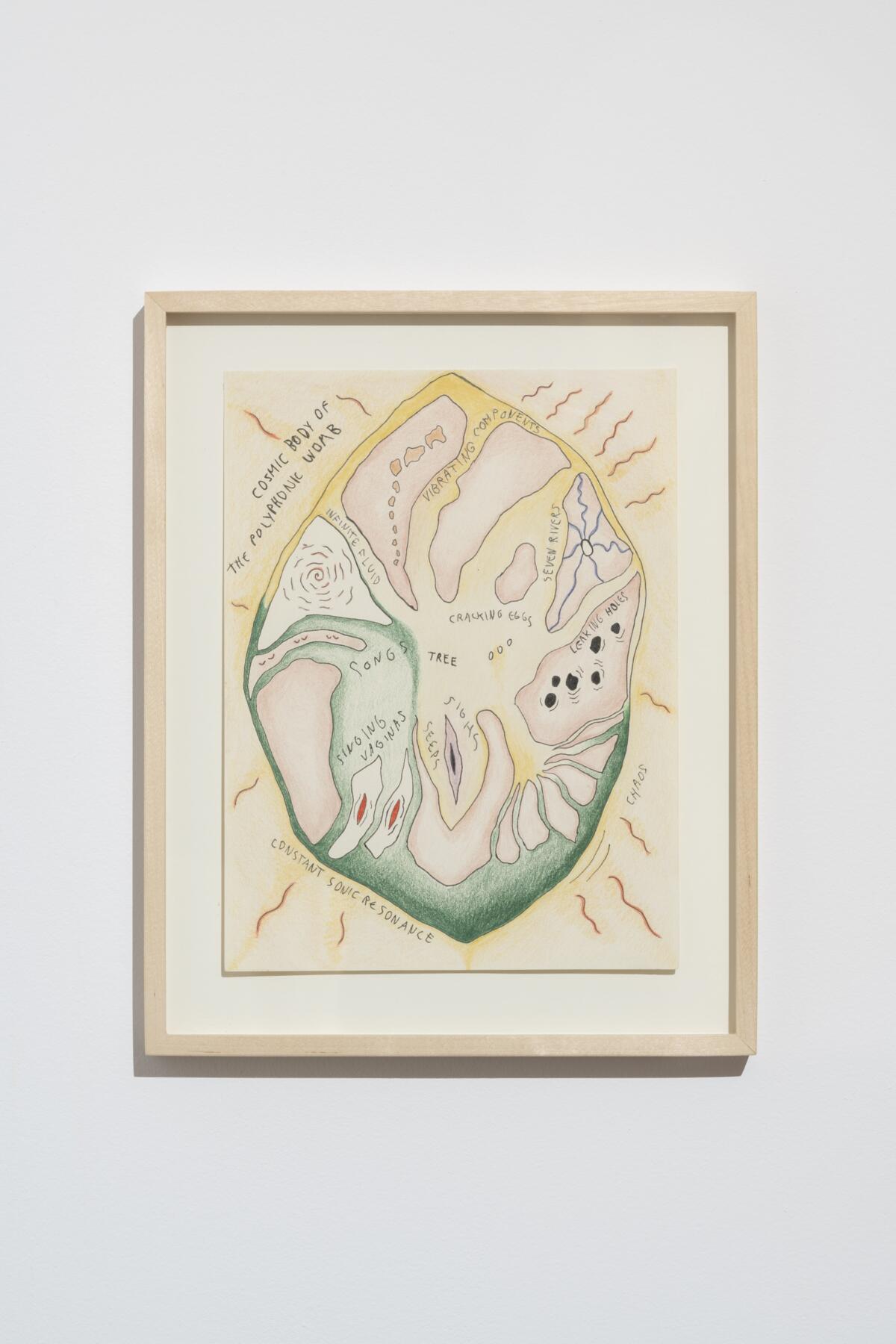

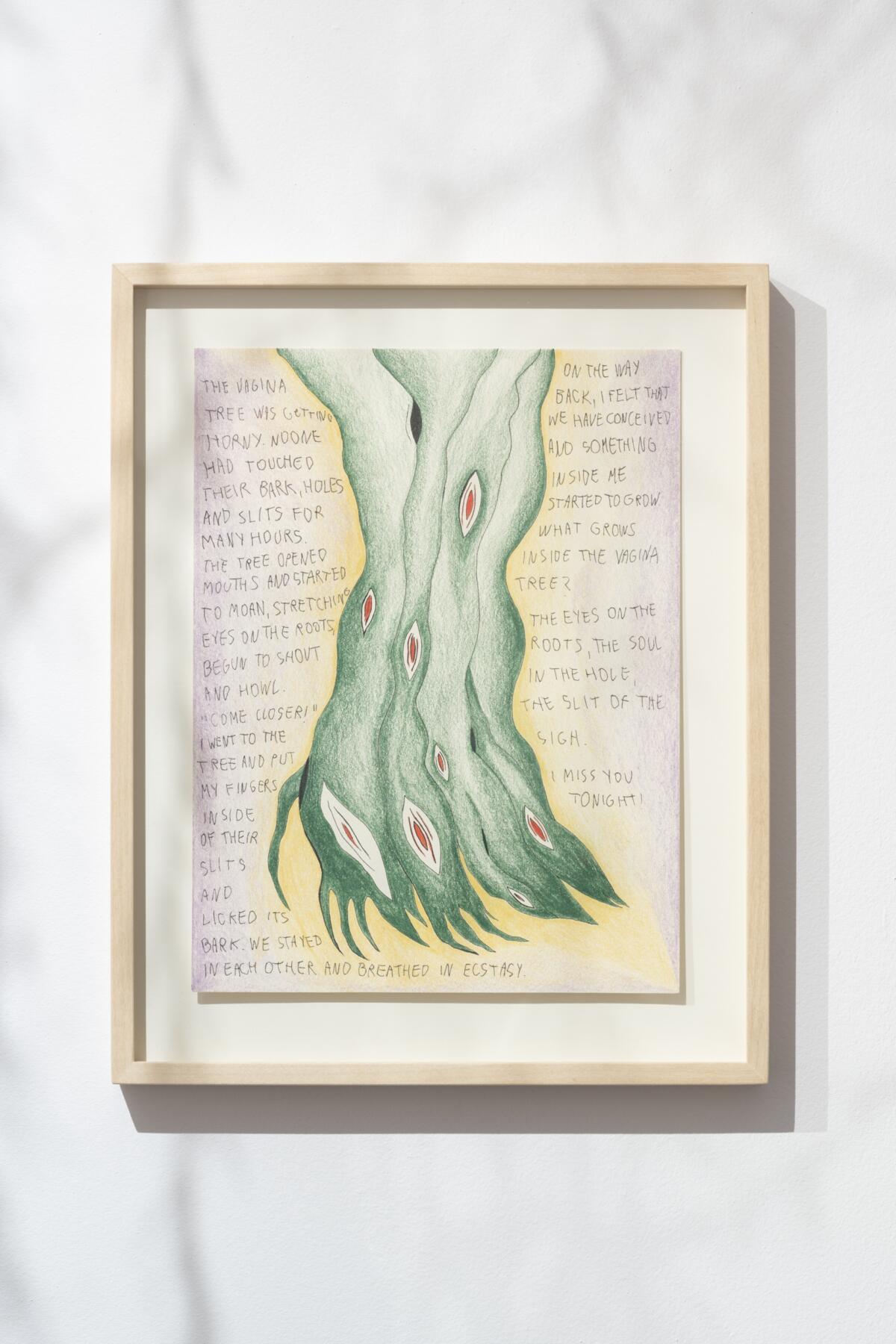
[1]The title of the exhibition comes from the soundtrack of the video The Polyphonic Womb, in which the artist combines polyphonic songs with poetry and performance. Here Tučková treats the womb as a space of po-lyphony and constant sonic resonance. She recounts stories of fluid human and more-than-human bodies, placing the dead river at the center of the non-linear narrative as a metaphor for the degradation of the eco-system. The individual parts of this film project, consisting of several chapters and still in development, were co-created by: Mariana Hradilková, Raffia Li, Rebeka Maxová, Iga Świeściak and Dorota Tučková.
[2]Cello composition and performance: Alexandra Duvekot.
[3]Harph composition and performance: Barbora Váchalová Matějů.
[4]Improvised with Mariana Hradilková.
Imprint
| Artist | Marie Tučková with Iga Świeściak |
| Exhibition | When they drank it all, their hair became grass, their fingers became waves, their eyes became mirrors of the sun, and their sweat became the saliva of the river |
| Place / venue | Arsenal Gallery in Białystok |
| Dates | March 31 – May 21, 2023 |
| Curated by | Tomek Pawłowski-Jarmołajew |
| Exhibition design | Agata Biskup |
| Photos | Tytus Szabelski-Różniak |
| Index | Agata Biskup Arsenal Gallery in Białystok Iga Świeściak Marie Tučková Tomek Pawłowski-Jarmołajew Tytus Szabelski-Różniak |

